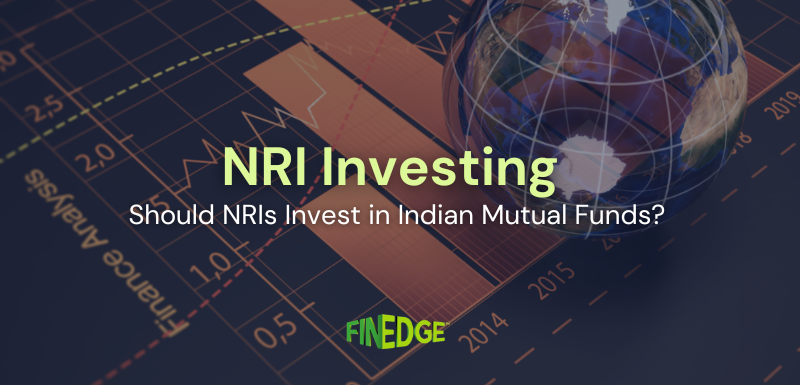What Are Large-Cap Funds? Risks, Returns, and Should You Invest?
- Large-cap funds invest in the top 100 companies by market capitalization.
- They are considered the most stable equity category, offering steady growth with lower volatility.
- Best suited for conservative to moderate investors seeking consistency.
- Ideal allocation: 35–50% of your equity portfolio, forming the “core” of most portfolios.
- 10-year category returns average ~12–13% CAGR, proving long-term reliability.
Large-cap funds are the foundation of most equity portfolios. They may not deliver overnight riches, but they provide stability, consistency, and peace of mind for long-term wealth building.
What Are Large-Cap Funds?
According to SEBI’s definition, large-cap funds are mutual fund schemes that invest primarily in the top 100 companies by market capitalization.
These companies are market leaders well-established businesses with strong balance sheets, proven track records, and wide investor trust. Examples include blue-chip names from banking, IT, FMCG, and energy sectors.
Large-cap funds form the safest segment of equity investing, offering steady returns with relatively lower volatility compared to mid- or small-cap funds.
How Do Large-Cap Funds Work?
By SEBI regulation, at least 80% of a large-cap fund’s portfolio must remain invested in the top 100 listed companies.
-
In bull markets: large caps rise, though often at a slower pace than small or mid caps.
-
In downturns: they fall less sharply, offering better downside protection.
-
For long-term investors: large caps provide steady compounding, making them ideal for building the “core” of a portfolio.
How is Taxation on Large Cap Fund Returns Calculated?
Understanding taxation is critical before investing.
-
Short-Term Capital Gains (STCG): If units are sold within 1 year, gains are taxed at 20%.
-
Long-Term Capital Gains (LTCG): If units are sold after 1 year, gains up to ₹1.25 lakh per financial year are exempted from tax. Above this, LTCG is taxed at 12.5% (without indexation).
-
Dividends: Taxed as per your income tax slab.
These rules directly affect the Equity cap fund returns investors finally take home.
Advantages of Large-Cap Funds
-
Stability and Reliability: Backed by market leaders with proven businesses.
-
Lower Volatility: Safer than mid and small caps during corrections.
-
Liquidity: Shares of large companies are widely traded, ensuring smoother fund management.
-
Ideal Core Allocation: Perfect for building the stable base of any portfolio.
Disadvantages of Large-Cap Funds
-
Lower Growth Potential: Returns are steadier but generally lower than mid or small caps.
-
Market-Linked Risk: While safer, large caps are still equity investments and can face drawdowns.
-
Underperformance in Rallies: In strong bull markets, large caps often lag smaller categories.
Recent Returns of Large-Cap Funds
As per Value Research (April 2025 averages):
-
3-year average return: 15% CAGR
-
5-year average return: 13–14% CAGR
-
10-year average return: 12–13% CAGR
These numbers show that while large caps won’t deliver flashy double-digit spikes like small or mid caps, they provide steady compounding and reliable performance across cycles making them indispensable for long-term investors.
Pro Tip
If you’re new: Large caps are the safest entry point into equities. Use SIPs: Builds discipline and reduces timing risk. Core allocation: Always keep large caps as the largest piece of your equity portfolio. Think long-term: Expect steady compounding, not overnight wealth.
Should You Invest in Large-Cap Funds?
Yes, large caps should form the core of almost every equity portfolio.
Who Should Consider Large-Cap Funds?
-
Age group: Suitable for all, from beginners in their 20s to retirees.
-
Time horizon: 3+ years for stability, ideally 5–10 years for compounding.
-
Risk appetite: Low to moderate investors seeking consistency over high-risk returns.
-
Portfolio stage: Best starting point for new investors; also essential for seasoned ones to anchor stability.
Who Should Avoid Large-Cap Funds?
-
Investors expecting overnight “multibagger” growth.
-
Very aggressive investors seeking only high-risk, high-return products.
How Much Should You Invest in Large Cap Funds?
-
Conservative investors: 40–50% of equity allocation.
-
Moderate investors: 30–40%.
-
Aggressive investors: 20–25%, keeping large caps as the stabilizing base.
Large-cap funds are not about chasing the highest returns they are about ensuring consistency, stability, and discipline in your financial journey. They form the anchor of any well-constructed portfolio, providing the peace of mind that comes from investing in proven, market-leading businesses.
FAQs
Your Investing Experts
Continue Reading
Types of Debt Funds in India
Debt funds in India offer something for everyone, from overnight investors to those with long-term goals. Knowing the types of debt funds can help you align your choices with your financial plan.
Should NRIs Invest in Mutual Funds in India?
India’s economy is entering a powerful growth phase, and NRIs have a unique chance to be part of it. Mutual funds make it simple, transparent, and goal-driven to participate in this long-term opportunity.
Arbitrage Funds in India: Balancing Stability and Tax Efficiency
Arbitrage funds turn short-term market inefficiencies into steady, low-risk returns. They offer a simple, tax-efficient bridge between savings and equity investments.
.png)
.png)

.png)